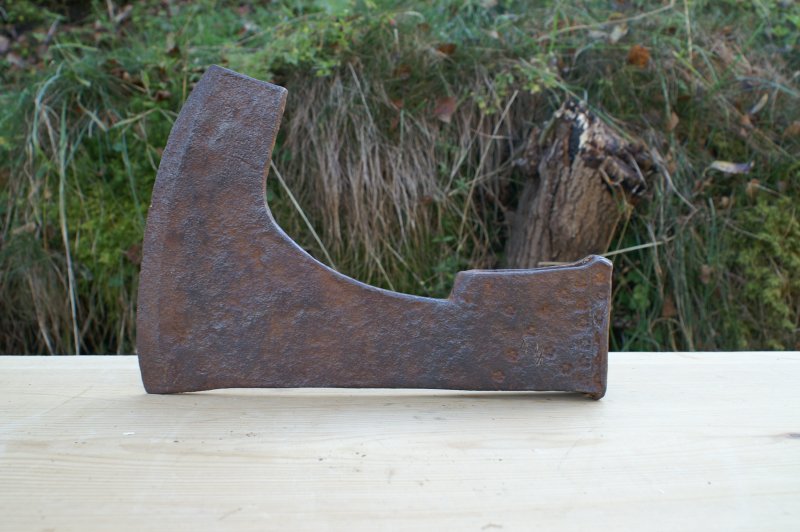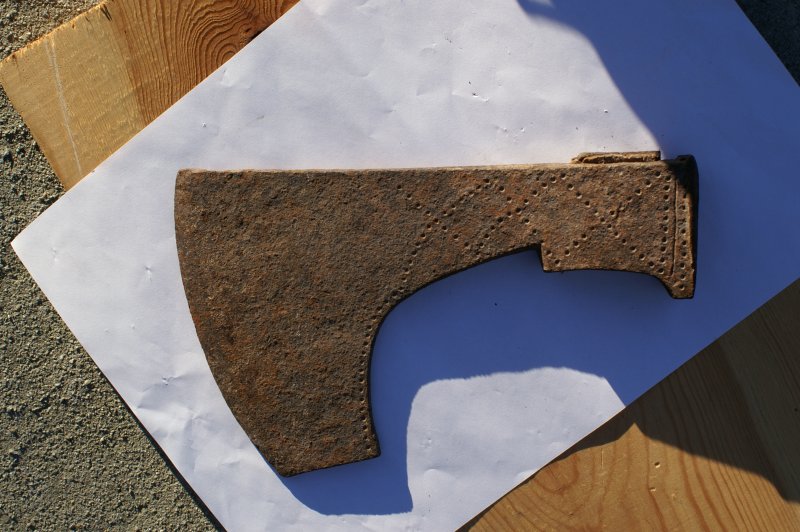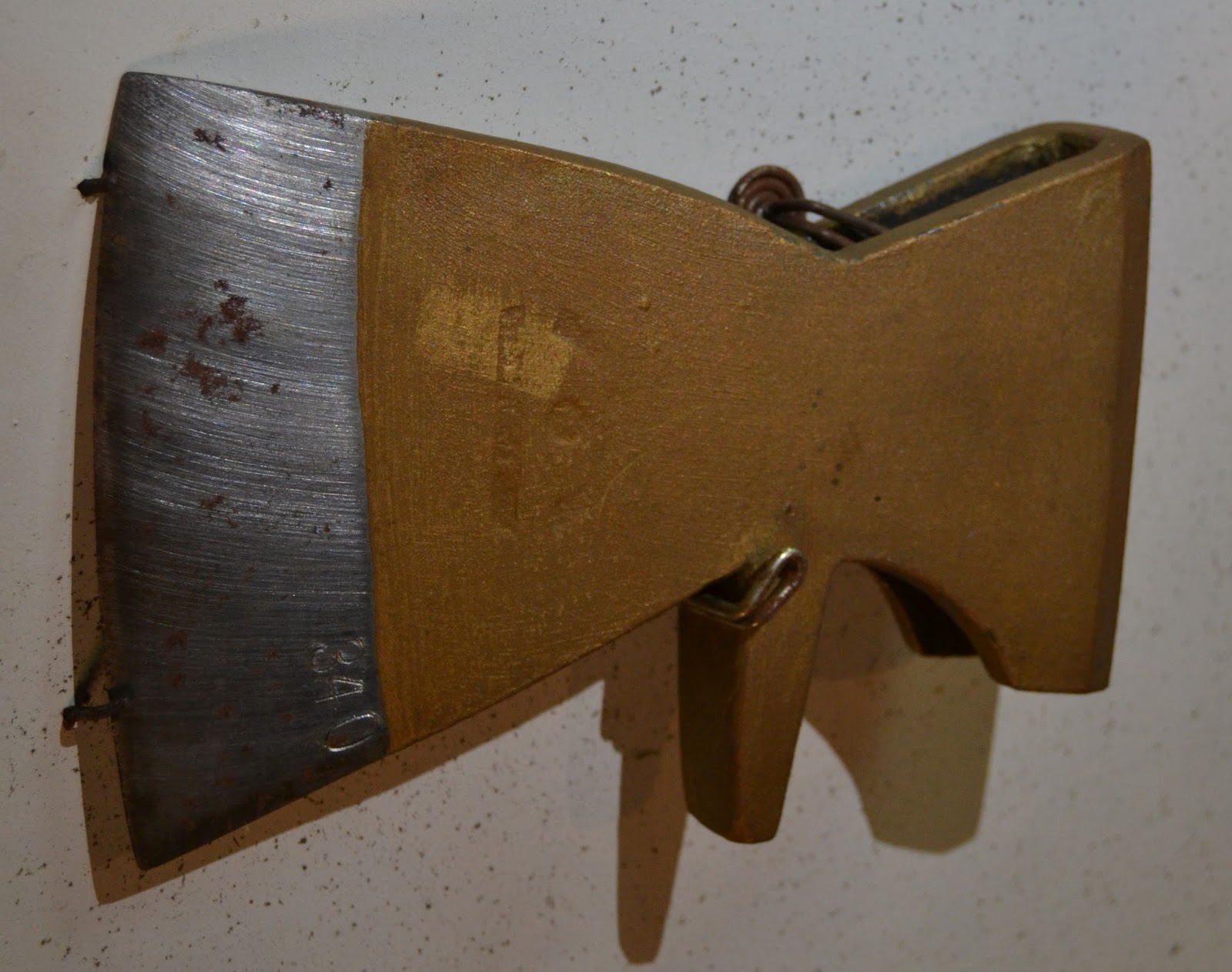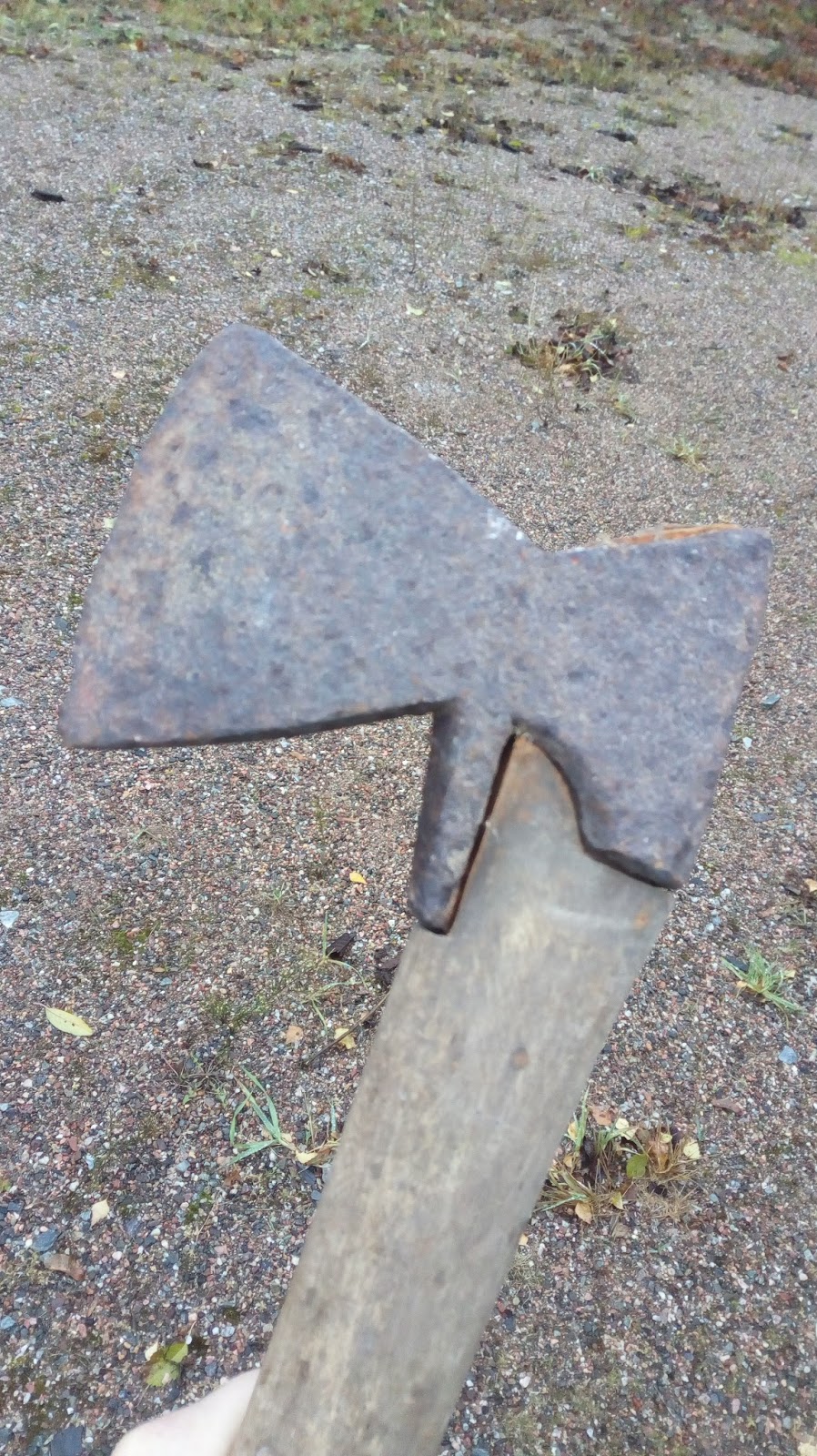- Joined
- Mar 2, 2013
- Messages
- 1,772

At one point I noticed the handle was probably thicker than need be so I thinned it down to something slimmer and it may be noticeable in this picture

Here are the important informative shots, giving an idea of the lightness of the blade and a clue or two that it may be an axe for squaring up timbers, or an axe meant for slicing wood.


It looks like a late date modification has taken place with a joining at the extension area and that was unfortunately not done in the best way having gotten an electric weld, as the mess in the middle seems to show. I do like very much the quirk forged in at the inside tip of the incursion which forms the beard as well as the unique stamping at the side of the eye, though I can't make out what it is supposed to be representing.













